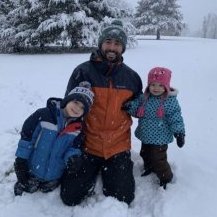-
Posts
26,746 -
Joined
-
Last visited
Content Type
Profiles
Blogs
Forums
American Weather
Media Demo
Store
Gallery
Everything posted by psuhoffman
-
Must make it hard to aim
-

Frederick, Carroll, Baltimore, and Harford Counties Area Discussion
psuhoffman replied to Interstate's topic in Mid Atlantic
NE MD pummeled -
I am almost sure I am going to see plenty of more snow.... because I'll be in Vermont 4 of the next 6 weekends
-
Could maybe... but a colder airmass will also require a more amplified wave to get to our latitude also, think back to the GFS runs the other day with a colder press from the TPV and a stronger wave giving us 12" lol. A weaker wave in that paradigm would slide to our south because the boundary is further south and a weak wave wont press the boundary north. What we want...is to get the thermal boundary south of us....down to like NC border...then have a strong wave as the boundary lifts back north.
-
De-amp wont work though...yea it might get the storm under us but we have a crappy antecedent airmass...the only path to snow is a bomb really. We need a sub 990 low at our latitude probably for this to work...which is another way of saying its probably not going to work...but the win would be the GGEM but have it bomb out a little faster/further south. I am not as worried about suppressed with this wave, there is no mechanism to suppress it other than if the wave just washes out and ends up really weak but then who cares its not a snow for anyone.
-
it's all rain.... it does go nuculear off NJ and give NYC a blizzard though so yay for them
-
GGEM has a perfect track rainstorm!
-
It's really just a progressive but amplifying wave along the boundary. It doesn't develop late or jump us..its just too far north of a track as is. If you adjusted that track south a bit we would get a decent snowstorm from it. If the boundary is cold enough I should say.
-
no the surface adjusted to the H5, but it did so in the opposite way than I expected.
-
Yea... that's probably why it doesn't look THAT much worse even if you go back to the 1800s...because you started the comp at a relatively snowy point of the cycles. The more troubling thing to me would be if you use the handful of sites we have that do have reliable data back into the 1800s, we now have 4 "snowy" cycles to evaluate and the max snow anomaly seems to be shifting north with each one. If you go back to the snow max in the late 1800s the greatest positive snow anomalies were even centered south of us with several notable major southern snow events. The 1960's one was centered right over us with DC to NYC being the max positive snow anomaly for the period...but the last snowy cycle from 2001-2015 the anomaly was centered from NYC to Boston! At what point if this continues are the positive snowy periods not as snowy? Yes the last snowy cycle was a lot better than the last 8 years but it wasn't nearly as snowy for DC and Baltitmore as the previous 3 snowy cycles were.
-
Depends where you start the regression...if we go all the way back to the 1800s we've lose a little over 20% in Baltimore. That number changes if you start picking different arbitrary points in time to compare. You can even make it look like we've not lost very much if you intentionally start the comparison at the nadir of a cyclical warm snow drought period.
-
So my analog identification didn't fail...my imagination did. During my crusade to show that "not a single remotely similar setup to this produced a significant snowstorm for Richmond or the Delmarva I failed to entertain the possibility that guidance was still correcting south and it would end up a VA Tidewater and Eastern NC snowstorm. The analogs DID fit several of VA Beach and the Outer Banks biggest snows. This storm would not have been identified in my efforts to find a comp because at that time every model was showing a big snowstorm for Richmond to S NJ so I looked at every 8" snow at Richmond and Salisbury...but this ended up well below that level for those locations. Had I pulled up 8" snows for VA beach and Elizabeth City NC I would have found very good comps and I immediately did as soon as I looked at that set. Analogs did win out over models...just in the opposite direction from what I had thought! The premise being a strong upper level feature crossing through the Midwest, Ohio and PA is not going to produce a major snowstorm for central VA and the Delmarva. There are two possible outcomes with that track of a strong ULL...either it causes a phased storm which will end up north...and likely we would be on the southern edge of heavy snow with such a storm and the max would be NW of us.... or its going to not phase and the ULL will act as a suppressive feature and whatever wave there is will track way way south of us. I was not open to the idea it would end up as suppressed as it did at the time so I failed to see the correct outcome.
-
I have a good feeling about 0z tonight
-
I don't see any difference in the pattern from yesterday honestly. We can now see a day further and you seem focused on what comes "next" after the cold period. But yesterday at the very end of ensembles they were already building a ridge west of alaska as the pacific jet retracts and the MJO probably starts to get more hostile by then. Today we just see a day further into that process. But if you pick a steady date like March 1 or March 5 things look pretty much the same now as they did 24 hours ago. You are focused on the changes in the pac that happen around March 5-8 which will be the linkely end to cold for us by around March 10-15 which we already knew.
-
Bad people often like to act strong but I would contend they are not always actually strong. Good people often are reserved which is not always weakness. But this is a side topic to my original point.
-
We better hope not because we won’t be long for this world if we regress to our less civilized base state but with our current level of technology. I do not think giving any of those previous societies you mentioned access to chemical, biological and nuclear weapons would end well.
-
I was limiting the scope of my comment to our current western liberal democratic society post WW2. As a sociologist it disturbs me that we created what by every objective measure is the most equitable, egalitarian, and successful society in history but recently there seems to be a movement away from the values that made our current society objectively better than all those you just listed. Especially if you were not lucky enough to be one of the few in positions of power in such a society. The inception of this point is due to the fact I’ve increasingly seen references to “strength” as an automatic positive even when describing someone who is an objectively awful human being. Which is odd. Take Hitler for example. Wouldn’t it have been better if he was a weakling? Strength is only a good thing if it’s vested in someone who uses it to do good. If someone is evil strength is a bad thing. It feels as if being strong has become the most important thing to many and that’s dangerous imo.
-
Why does it seem “strength” is becoming a more valued characteristic than kindness or empathy? What good is strength without kindness. Actually if someone is a bad person isn’t it better if they are weak!
-
That must have been a monster storm on guidance.
-
Not liking it and the annual need to have a bitch fest about it are two different things. There are many things I don’t like but if it’s normal come to accept and just deal with. Typically when you complain a lot it’s something new or unusual. It’s odd that every year like clock work we have the same exact discussion
-
Yes but that comes typically in later March and April. Early March is usually pretty chilly and often has some snow. Kinda like December. We can get 60 degree days in Dec also but it’s not normal. Or it wasn’t until recently lol. But every year some act like it’s weird or some horrible abomination they can’t abide if it’s not 70 the first week of March. The April thing i get.
-
But ya know what, it’s a free country still, I think… so ya can feel however you want. Me, I’m enjoying every flake I can get. I don’t care what time of year. Is all snow and it’s going to melt no matter when it falls.
-
Now that I get
-
3 weeks yes. Getting snow to stick around 3 or 4 days it’s not a crazy difference. But my point is almost all our snow is marginal sloppy storms that melt pretty fast after. That’s like 80% of our snow climo. So kicking March snow out of bed because it’s just like most of our January and Feb snow seems weird. Are we gonna kick all the sloppy 3-6” storms we get in mid winter that melt right away too? Funny I didn’t hear a lot of people doing that last week when they got a 6” snow that was going to wash away the next day! And if we did we would average like 3” a year if we only found snowstorms that are cold smoke and last a week after. That happens almost never even mid winter. I dunno seems like some people are chasing a mirage or have this unrealistic image of what Jab Feb snow is like here.
-
And once in a blue moon we can get snowcover to stick around a week or so in March also. 2014 was an example for some places. Yes it’s more rare but people act like we’re Vermont and we have a foot of cold smoke that lasts weeks in January and March is mud season. Our whole winter frankly sucks for snow 90% of the time and we need to take snow whenever and however we can.








